Kraków 2008-08-01
271b Section 1985-03-05
PZL I-22 Iryda
Poland
Combat training aircraft.
History PZL I-22 Iryda. Part 5.
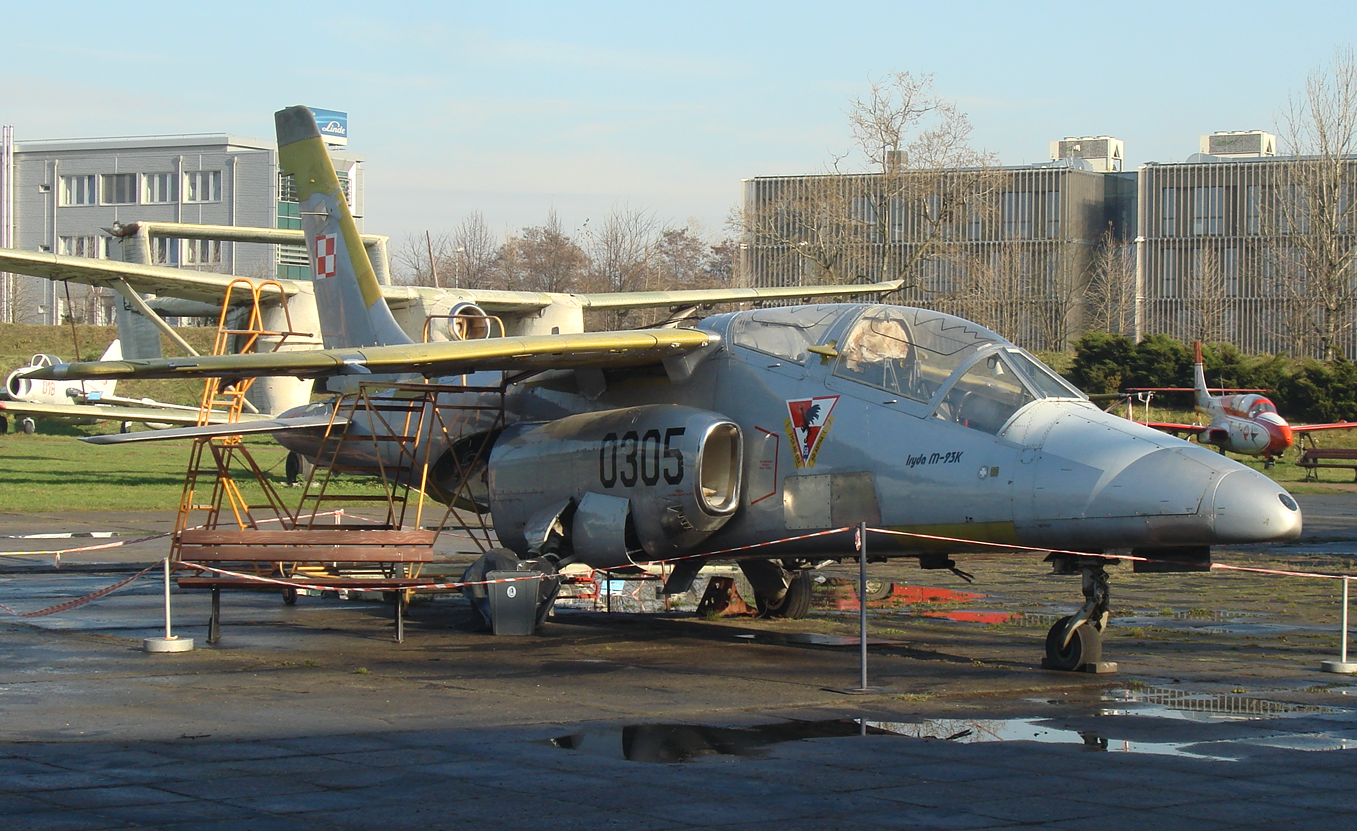
Version M-96 and Sextant-Avionique avionics. 1996 year.
New, subsequent arrangements led to a changed vision of the M-96 aircraft, which was to receive a modified wing, new tail, vertical stabilizer and another new version of avionics. New avionics - It was not known for what? After all, Sagem avionics have officially gained very good reviews. Unofficially, it was said that Sagem avionics was too expensive (?).
In March 1996, the Ministry of National Defense announced a competition for avionics for the M-96 version. It was at least a strange situation. As if the Ministry of National Defense wanted to produce aircraft for itself. Such a competition has already been carried out and the Sagem avionics performed well on the I-22. In addition, the Ministry of National Defense constantly raised issues of small funds, and these were additional costs. On these arguments, the Ministry of National Defense claimed that Sagem withdrew from the Polish market. It should also be noted that, according to some opinions, it was Sagem that was forced to withdraw as a result of pressure and lobbying. Finally, a new competition for modern pilot and navigation equipment for Iryda was won in 1996 by the French company Sextant-Avionique.
The equipment included: an inertial platform, extensive navigation equipment (GPS, IFF, ILS), a new radio altimeter RWL-750M, the HUD display and its repeater, two multifunction monitors (EFIS), new communication equipment. Avionics was to be integrated with the Mil-Std 1553B data bus.
Anticipating the facts, we write that for two years the integration of the systems with each other has not been done. In 1998, Iryda with avionics Sextant-Avionique stood in Mielec because the program was suspended. In a word, four years have been wasted.
At the beginning of 1996, the Ministry of National Defense presented new modified conditions of WTT (96). One of the arguments was the new situation related to the new military doctrine. In April 1996, the authorities signed with WSK PZL-Mielec S.A., contract No. 222 / IX / 96 / ZS / 139 for the modernization of 11 I-22 aircraft already built to the M-96 standard and the construction of another 6 aircraft. The contract was to be implemented by the end of 1997.
All planes were to have improved aerodynamics, Sextant Avionique avionics, Martin-Baker 10 PL seats and K-15 engines.
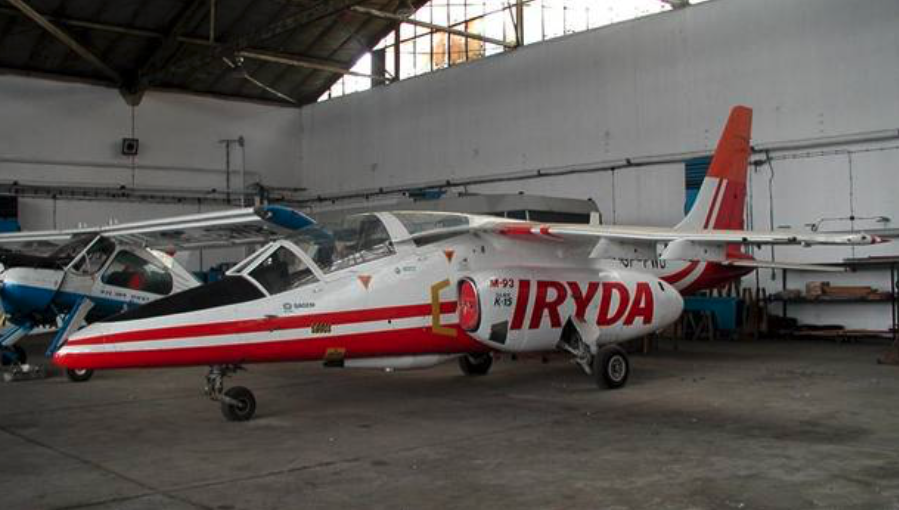
I-22 M-96 aircraft No. ANP 001-05 SP-PWD registration after modernization in 1996. Visible vortex generators (inflows) on the leading edge and elevated vertical tail.
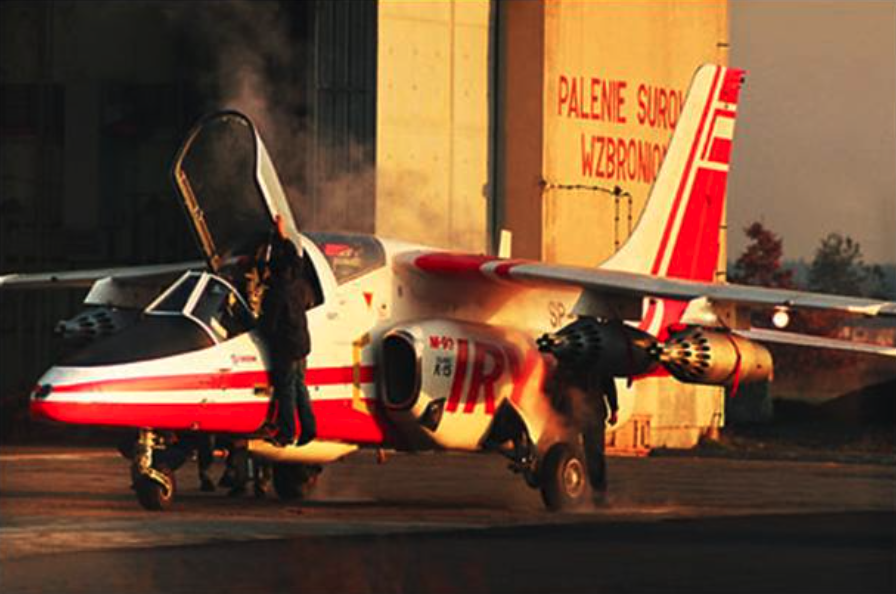
The same aircraft No. ANP 001-05 with already painted vertical tail, but without inflows in front of the wings.
On December 21, 1996, a modified copy No. 1 of ANP 001-05 (SP-PWD), which was the progenitor of the M-96 version, was flown, with vortex generators in front of the leading edges, turbulators on the upper surfaces of the lobe and an elevated vertical tail. The aircraft also received modernized aerodynamic brakes. The machine has reached a maximum speed of 850 km / h.
The obtained angle of attack of 25-26 degrees aroused admiration (some sources even gave values of 28-32 degrees), among others thanks to the use of turbulators that delay the detachment of air streams. These results were achieved without inventions such as fly-by-wire control. Until now, the plane reached 17 degrees. We remind those interested that the MiG-29 can fly at 25 degrees, according to the instructions for use. Thus, the flight characteristics of the aircraft were improved, especially at take-off and landing.
Some modifications, however, required some refinement: the installation of bands in front of the wings, for example, restricted the field of view from the second instructor's cabin.
From today's perspective, it is known that all these activities were only appearances. Even then, the Ministry of National Defense was looking for Western construction.
1997 year.
In 1997, the technical design of the target M-96 aircraft was completed in IL. At the same time, aircraft AN 002-04 (SP-PWG) was rebuilt to this version. On April 23, 1997, this aircraft with avionics from the company Sextant-Avionique was flown. The flight was completed on August 16, 1997, and its pilots were J. Wiechecki and L. Natkaniec. In the autumn of 1997, the aircraft was picked up by the army.
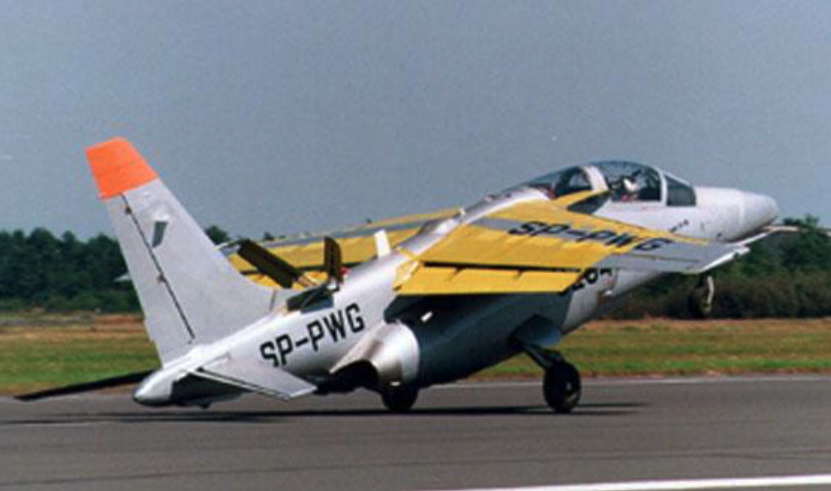
I-22 aircraft no. AN 002-04 SP-PWG registration after reconstruction to the M-96 standard. Highly visible vertical tail, modified wings and bands in front of the main wings. 1997 year.
Pending the necessary technical documentation, the second aircraft was rebuilt and was ready for testing at the end of 1997.
At that time, however, the army withdrew from the contract. It was claimed that the industry underestimated the costs.
Even partial tests of the Sextant-Avionique avionics mounted on two aircraft have never been conducted, so it is difficult to determine their value. For two years, integration of the systems with each other has not been achieved. In 1998, both Iryda I-22 aircraft with the Sextant-Avionique avionics were standing in Mielec because the program was suspended. Poland has already ordered 17 sets of Sextant-Avionique avionics, which have not been delivered to Poland due to failure to pay. In a word, four years back.
It should be noted that the Factory in Rzeszów also did not rest on its laurels and was constantly working on improving the K-15 engine. In 1997, testing of the K-16 engine was completed, which is the development version of the K-15. The new engine is characterized by a longer life cycle, lower weight, better, faster entering the revs and greater thrust of 1,600 daN. These parameters were obtained by increasing the temperature of the air circulation in the engine and by changing the compression value. New engine installations and new production technologies were used. However, due to the lack of further funding, further work on K-16 was abandoned. Work on a two-flow D-18 engine with a speed of 1,800 daN was also suspended.
The plant in Mielec. 1997 year.
At the beginning of 1997, the Mielec factory was on the verge of bankruptcy.
Two versions of events appear here;
- Due to difficulties in the factory's operation, the government and the Ministry of National Defense are postponing the contract completion date to March 1998, and then to December 1998. It was also found that the advances paid for the implementation of the contract by the Ministry of National Defense "disappeared". In November 1997, the management of WSK PZL-Mielec unilaterally terminated the contract.
- The PZL-Mielec party stated that the Ministry of National Defense did not fulfill its obligations and went to court to obtain contractual penalties due to the fault of the awarding entity, because the Ministry of National Defense withdrew from performing the contract.
And thus the scandal of Program I-22 began. Details of the contract were then disclosed. It was divided into eight stages. The army has made advance payments for individual stages, which according to the Ministry of National Defense have not even begun. The subcontractors did not receive money for the delivered components. Companies WSK PZL-Mielec S.A. i ZL Mielec sp z o o manages a fictitious business entity.
1998 year.
In 1998, under pressure from politicians who were supporters of the Program, the Ministry of National Defense donated a small amount to complete Program I-22. The completed planes were to be sent to the Navy. This was strange because the Ministry of National Defense raised the issue of insufficient safety of flights performed on I-22. This idea of the Ministry of National Defense confirmed the supporters of I-22 that the disaster in Dęblin was only an excuse to end the unwanted Program. I must admit that the lack of financial liquidity of the factory, by underinvesting it, made the project impossible.
The Navy expressed interest in having I-22 aircraft. The MiG-21 and TS-11 R aircraft used by the Navy were nearing the end of their service. According to the project, MW could take over the slightly modified M-93, which was initially given the name Orkan. Lack of funds made the plan impossible.
At that time, further ownership transformations were carried out in Mielec. Rights and obligations of the bankrupt WSK PZL-Mielec S.A. took over a new entity - Polskie Zakłady Lotnicze in Mielec. However, Mielec's production potential at that time was already small. If someone ordered, for example, 100 planes in Mielec during three years, this task would not have been completed. At that time, the price of one aircraft in the M-96 version was $ 6.5 million.
On December 31, 1998, the Department of Armaments and Military Equipment of the Ministry of National Defense signed a contract with PZL Mielec to continue the Program.
1999 year.
On April 7, 1999, the Rzeszów court declared PZL-Mielec bankrupt. Under Polish law, this was the best possible solution, as it created the possibility of deep restructuring of the company, maintaining it and continuing the Program I-22. From the conversations held between the ZL in Mielec and the Ministry of National Defense a specific opportunity was born. The factory in Mielec has decided to introduce a repair program, and the Ministry of National Defense will allocate money to complete the M-96 version.
In July 1999, interested parties negotiated an annex to the 1996 agreement to conduct preliminary and qualification tests of the M-96 aircraft. The annex was not signed because he could not. The army set unacceptable conditions. The factory trustee demanded that the factory refund statement be removed if the aircraft did not meet the WTT-96 conditions. The Ministry of National Defense also did not agree to remove the provisions about any contractual penalties imposed on the manufacturer.
On September 8, 1999, a conference was held on the possible introduction of existing aircraft into service in MW. They took part in the conference; commander of the Air Forces and Air Defense, commander of the Navy, representative of the General Staff of the Polish Army, Budget Department, Department of Armaments and Military Equipment Supply and Department of Development and Implementation. In the course of this meeting, the problems were seen to be honest. And that the planes need renovation, because the 7-year period for major repairs has passed, and the fact that the factory threatened with bankruptcy (liquidation) is not a good partner for servicing planes for a minimum of 20 years, and the fact that many contractors are no longer on market. There was also a proposal to restore 11 machines to the M-93 version standard and transfer them to MW, but the cost of this operation would be the same as the completion of the M-96 Program, i.e. about PLN 220 million, including research and qualifications. This information was confirmed by Secretary of State Romuald Sheremetyev in the Sejm of the Republic of Poland in February 2000. His statement was painful and unfair - "To sum up, the I-22 Iryda aircraft did not meet the revised WTT conditions several times and it should be stated that there are no rational premises indicating that the Iryda aircraft will return to operation in the technical condition specified by the user.
At that time, a court case was pending against the Ministry of National Defense, which was brought by PZL-Mielec, for failure to comply with the contract. On November 4, 1999, a decision was reached at the Provincial Court in Rzeszów, according to which the action of PZL-Mielec Sp. z o.o. against MON. In the justification of the judgment, the court found that the unilateral termination of the contract by PZL-Mielec Sp. z o.o. constituted an abuse of subjective law by a provider contrary to the principles of social coexistence. This decision became part of the political sphere, not the subjective one, which can be seen in the justification of the judgment.
On November 8, 1999, the Ministry of National Defense quietly decided to terminate Program I-22. This was confirmed by debates on the next state budget in which the I-22 Program was not present. In the work of the parliamentary defense committee, the Ministry of National Defense did not raise the issue of continuing the Program. Estimates of the ministry showed that modernization of 14 aircraft of this type with K-15 engines and a new avionics would cost about PLN 310 million, and the introduction of other engines would cost about PLN 632 million.
In 1999, then Deputy Minister of National Defense Romuald Sheremetyev assured his willingness to continue the Program by speaking in an article entitled "Weather Forecast - High Flights." The management of PZL Mielec blamed the Program for failing to develop it, which made organizational errors, was uneconomical and even accused of corruption. NIK and UOP took care of the factory. There were arrests of some executives. The plane got it too. That its service life is small, it is only 2,500 hours, and every 850 hours it needs renovation. The TS-11 Iskra is 4,500 hours and the British Hawk is 10,000 hours. The heart of the article were the views on the need for further research on the ground and in flight M-96 and testing of new French avionics. "Even if the research did not confirm the assumptions, we can direct Irida to the Navy." However, there was a sentence - "... ways of acquiring a new training and fighting machine are being analyzed." The hypocrisy of this statement lies in the fact that the Ministry of National Defense at that time already deleted the I-22 Program, and all these were sham actions.
2000 year.
In 2000, once again attempts were made to save what was left of Program I-22. The inter-ministerial commission chaired by Mr Longin Komołowski considered three main alternatives; cancellation of I-22, its further implementation or development of existing aircraft after some unification in WM.
In 2000, the idea of taking over 17 machines by the Navy returned, which threatened to remain without turbojets. (This happened in 2003 anyway). This time planes were planned to bring the M-96 standard. However, this path was not chosen. Polskie Zakłady Lotnicze Mielec, which were created from a part of the bankrupt plant WSK PZL-Mielec S.A., received on deposit I-22 aircraft owned by the Ministry of National Defense in order to carry out tests to show whether the aircraft would meet the requirements of the army after modernization (WTT 96 conditions). But the Ministry of National Defense showed no interest in the course of work.
In December 2000, the Defense Committee of the Council of Ministers gave a positive opinion on the plan for conducting factory and qualification tests of M-96 aircraft (cost PLN 22-24 million), after which the decision to upgrade machines to this standard was to be made. Nothing came of it.
In 2000, it began tragically for the Program, due to ambiguity in sending funds (another court case was pending against the Ministry of National Defense by the Bank Depository-Kredytowy Grupa Pekao S.A.). In the above-mentioned speech by Romuald Sheremetyev in the Sejm of the Republic of Poland on February 1, 2000, he said that "he did not foresee the allocation of funds for the continuation of the Program under the 2000 budget. In this situation, the Program may be continued if funds are obtained outside the budget of the Ministry of National Defense. Considering the above and the lack of resolution of pending court cases, the Ministry of National Defense cannot make binding decisions regarding the continuation of the Iryda Program. " Between the lines we read that the Program has already been deleted.
2001 year.
However, in 2001, in the draft budget of the Ministry of National Defense proposed by the Sejm and Senate of the Republic of Poland, funding for research of Irida M-96 was reserved. It was planned to end them at the end of 2001. The research was to answer the question whether the upgraded version of the aircraft meets the requirements of military aviation and whether the Program should be continued, inter alia, to equip navy aviation with the I-22 squadron. The tests were to be carried out by Mielec Polskie Zakłady Lotnicze. In mid-2001, the plant received in deposit aircraft that were owned by the Ministry of National Defense and were under the responsibility of the bankruptcy trustee. The tests were to be carried out on three copies in the best condition. However, the Ministry of National Defense has consistently expressed no interest in continuing the Program.
2002 year.
In January 2002, the I-22 Program was officially closed again.
But in mid-2002, attempts were made to adapt existing machines to the needs of the Navy for the third time. The aircraft were to be designated M-93 M. The main changes were; modern avionics, reinforced wing beams, armament composed of RBS-15F anti-ship missiles, for self-defense AIM-9 Sidewinder or R-60 MK and others. Thales (formerly Sextant-Avionique) equipment was proposed as avionics. In view of the privatization of WSK PZL-Rzeszów and the discontinuation of the production of K-15 engines, the Rolls-Royce Viper 535 engines were returned. The plans are over.
There is no doubt that the Program has already been 100% buried, the potential squandered, and with existing machines it was not known what to do.
On November 20, 2002, the Program was once again sent to the Sejm of the Republic of Poland. Minister Jerzy Szmajdziński answered the interpellation regarding the completion of the Program. We will cite only a few excerpts from his statements, which diverge from the truth and at the same time are harmful to people associated with the Program I-22;
- "In the years 1992–1996 an attempt was made to implement the aircraft for practical training of cadets at the Air Force Academy in Dęblin. However, the aircraft proved to be unusable due to structural defects, high failure rate and low technical efficiency. "
- "Another disaster in 1996 caused that the aircraft operated at the University of Applied Sciences in Dęblin were handed over to the manufacturer in order to remove structural defects, carry out modernization and meet the minimum tactical and technical requirements."
- "17 Zhirda˝ aircraft with equipment are stored free of charge at the depository of the successor of that enterprise (Mielec). Putting them into service is not rationally justified due to maintenance costs, problems with providing spare parts, specialized equipment, technical facilities, as well as costs of training and maintenance of service personnel."
- "The Sejm of the Republic of Poland in the Budget Act for 2001 granted PLN 12 million for research and development. By the decision of the President of the Council of Ministers of May 15, 2001, the Ministry of Economy became the administrator of the funds allocated in the budget, and the general contractor - Polskie Zakłady Lotnicze Sp. z o.o in Mielec, but they were not launched."
- "The Ministry of National Defense did not anticipate in 2001, and does not plan for this year, funds for this purpose (Program). ... Answering the question regarding the transfer of 17 I-22 aircraft from the command of the Land Forces to the command of the Navy, I would like to inform you that the Navy has not yet requested this, among others due to the lack of funds to complete the Program. "
Well. Nothing can be done. These are texts almost to cabaret, because how to explain - we do not buy planes because they need to be maintained, train the crew and staff.
It should also be added that the government did not anticipate including the Iryda Program in the offset package when purchasing Multi-Purpose Combat Airplanes.
2003 year.
Despite the completion of any work on the aircraft, the project to continue the Iryda Program existed in 2003. In February 2003, at a meeting in the Sejm of the Republic of Poland, representatives of the Mielec factory and members of the National Defense Committee presented the concept of equipping the Polish Air Force with these aircraft. Without result.
But let's look at what was said at this last conference about the Irida Program. The meeting was held on February 24, 2003, on the initiative of MP Stanisław Janas (SLD) head of the parliamentary National Defense Committee in the conference room of the Sejm. Contrary to announcements, Janusz Zemke, Deputy Minister of National Defense, did not appear at the conference. He found the conference too specialist (?). He sent two representatives of the Ministry of National Defense in the rank of colonels. However, the heads of the largest aviation plants in Poland, including PZL presidents from Mielec and Rzeszów, did not disappoint. At the conference, according to Stanisław Janas, two things were denied. Firstly, the information disseminated by Janusz Zemke that the disaster of 1996 decided to discontinue the Iryda Program was denied. The second denied information was definitive abandonment. The program was suspended due to lack of funds, as confirmed by representatives of the Ministry of National Defense. However, the same colonels ruled that the Mielec plane was unfit for army service (?). Tadeusz Jauer, division commander-in-chief, was of a different opinion. - I am ashamed of my colleagues in uniform. They would like to play with expensive toys that they cannot afford - he summarized the objections of the representatives of the Ministry of National Defense, referring to the increasingly raised option of buying a Hawk aircraft. What in this situation? The chairman of the national defense commission was authorized by conference participants to ask Prime Minister Leszek Miller to unblock the funds for continuing research. The source of financing the venture would be money obtained from privatization of the arms industry sector. - There is a good chance of getting this money. It is only about PLN 20 million, while the costs of abandoning Iryda's research at this stage would cost us much more - said Stanisław Janas. The management board of PZL is of the same opinion. "You can't scrape something that hasn't been fully explored," he says. There was information that Iryda Mielec was definitely buried in 1999, thanks to a top secret, so-called "decision note" signed by the then head of the department, Janusz Onyszkiewicz. - There was a note, but about suspension of research. There is no way that we would not know about such an important decision of the Ministry of National Defense - explained Janas. MP Stanisław Janas: - We were able to establish some facts and deny the detrimental opinions of Iryda. Mielec made the M-96 version, which soared into the air, so it is not like mocking the military - the flight - flightless. We cannot afford to scrape this machine. Let's wait for the research to finish. We will also propose to the Americans to join this program as part of the offset.
2004 year.
At that time, Bumar became interested in unused aircraft. She wanted to resume the Program enough to bring the machines into full use value and sell (rent) them to India. No effect.
2005 year.
In 2005, I-22 Iryda AN 002-04 registration of SP-PWG in the M-96 version was transferred to the Polish Army Museum in Warsaw.
2006 year.
In 2006, Stanisław Jans said - "The decision to transfer the aircraft to the museum was still made by Minister Jerzy Szmajdziński. I think that this is political collusion against the only Polish military aircraft. The transfer of this copy of Iryd M-96 to the museum is a malicious act. The idea was that sometimes someone would not return to the topic in a situation when our military men walk on the heads of British Hawks. The whole problem with completing the Iryda Program in recent years was that all debts and debits of this Program were included in its cost. It had to discourage everyone. Also, I could never get information about the actual amount that would be needed to complete the program. Today, putting into service aircraft stored in Mielec is already problematic due to their completed resources. There were, however, other possibilities. Until recently Ukraine was interested in this construction. It was about modernizing Irida's construction and launching joint production with Poland. However, it is difficult to say whether this would still be possible. Someone would have to make the effort to fight for such a solution. But will anyone find such? The worst thing is that the sparks used in Dęblin and our pilots for training will soon end their lives, we will send to America for thick money. Perhaps this is the point, however. "
Iryda AN 003-01 registration of SP-PWI nb 301 was forwarded in 2006 to the Air Force Institute of Technology in Warsaw. At that time it was the only fully operational copy. However, he could not fly due to the lack of appropriate certificates and permits.
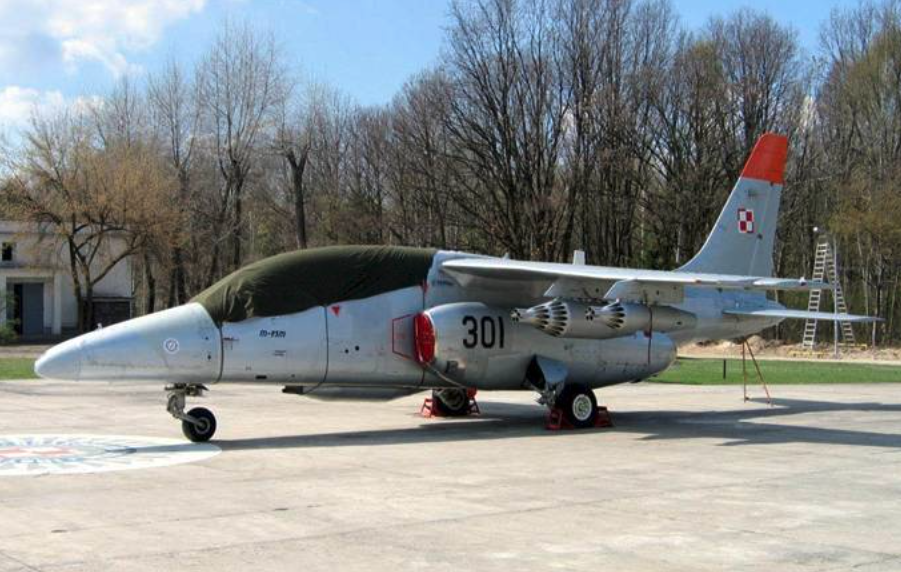
I-22 Iryda No. 1 aircraft ANA 003-01 registration of SP-PWI nb 301 at the Air Force Institute of Technology in Warsaw. 2008 year.
2007 year.
In 2007, a special team of the Minister of National Defense was established. Its purpose was to evaluate Program I-22 with the final version of M-96. We knew little about the work of this team. We only know the results of his action, which was announced on December 19, 2007, - The end of the Polish training-combat aircraft program implemented since 1972, and with which high hopes were associated in the second half of the 1990s. Existing copies were intended for research and museum purposes. In a word, the huge funds allocated by the Polish taxpayer went down the drain.
The desire to terminate the Iryda Program was already very strong in the second half of the 90s. But opponents started acting after 2000. In January 2003, the then Deputy Minister of National Defense Janusz Zemke, in response to an interpellation by one of the deputies, regarding the completion of the government's Iryd Program, stated that the catastrophe (1996) precludes the advisability of further work in this area, which upset the Mielec crew. Eventually, the Iryda Program was discontinued because these planes did not meet all the requirements of the Polish Air Force (?).
The Iryda program was buried at the finish, and the money allocated for the construction and improvement of Polish technical thought was wasted. A total of 17 machines were built, but despite declarations by subsequent governments from the 1990s, they were not used in the Polish army.
In 2000, the inter-ministerial team of experts appointed by the then government issued a positive opinion on Iryda, and in the 2001 Budget Act, the Sejm granted PLN 24 million to continue work on the aircraft. Although PZL in Mielec spent a lot of money on modernization of one of the machines, they did not receive money from the state budget.
Several years ago, tests were carried out, which once again confirmed the class of the aircraft. Its parameters have also been improved: among other things, the on-board avionics system has been modernized, and although, according to experts, Iryda is a safe aircraft, compatible with the F-16, which could be successfully used as part of pilot training, it will not rise into the air. The management of PZL Mielec was even ready to carry out further work on the plane, but without the financial support of the government it could not handle this problem alone. - It is a pity that Irida was not given a chance - says former president of PZL Mielec Janusz Szortyka.
The cost of producing one Irida is several million dollars. By decision of the Ministry of National Defense, two machines have already been handed over to the Polish Army Museum and the Air Force Institute of Technology. Other unwanted by subsequent Polish governments and defense ministers, which until recently occupied the hangars of the Mielec factory, were also taken away. - The Ministry of National Defense decided that the planes will be taken. Currently, the plant, which has been owned since 2006, is one of the largest helicopter manufacturers, the American concern Sikorsky Aircraft Corporation, is adapting its capacity to produce, among others, Black Hawk helicopter components - explains Janusz Zakręcki, president of PZL Mielec.
In this way, useless, expensive "scrap" was removed from the plant. As emphasized by Col. Cezary Siemion from the Ministry of Press and Information Department of the Ministry of National Defense, the aircraft that have not been used for years have been allocated for research, training and museum purposes. Negotiations on the sale of Mielec Iryd to India did not do much, as was still the case in February 2007 by the Bumar armaments group. The Iryda program implemented over the past few decades, which - according to estimated data - cost taxpayers approximately one billion zlotys, so it fell into ruins.
2008 year.
At the beginning of 2008, we received information that most aircraft would be scrapped. One copy will stand as a monument on the outskirts of the city of Mielec. There is no doubt that Iryda has become a monument. But not a monument to Polish technical thought and the possibilities of Polish industry, but a monument to the inefficiency of Polish governments. By 2005, two machines were transferred to the Museum of the Polish Army and the Air Force Institute of Technology, and the remaining 17 manufactured Irida, which had the chance to be equipped with Hindu air force last year, were transported to Kutno, where they have be scrapped. The tear in my eye turns.
Zbigniew Nowakowski, experimental pilot from Mielec. He spent 42 years at the controls of the aircraft. He flew 50 types of machines in Europe and Africa. He spent 300 hours at the controls of I-22. He said - "I'm losing a part of myself. It's a great plane, it's unique. Ideal for the safe training of young pilots. Unlike many other jet military aircraft, it has a very important feature. "I don't want to spin," the pilots say in their slang. Many disasters occurred when the machine fell into a corkscrew and the pilot was unable to control the plane. Iryda was different. She came out of this situation almost automatically. " According to the pilot, someone wanted to lose the project from the very beginning. He recalls how in 1991, when getting ready for the first presentation of Irida, someone gave the rumor that the plane was damaged. Someone wanted to prevent a flight. Fortunately, after clarifying the matter, the plane flew into the air. Now he comments - "This is my last goodbye to this wonderful plane," says the pilot in a voice breaking. It feels like he is losing a part of himself ... "
A widespread belief was created that the Program collapsed because the aircraft was a failed construction. This is in great contrast with the opinions of military pilots flying on I-22 in 1992–1996 in Dęblin. These opinions are not full of admiration, but factually state that the design is successful although it requires some refinement. Captain Chudzik said; "We flew in Irydach carrying over a ton of weapons and we had no problems." It should be added that these were only opinions about machines with PZL-5 (SO-3 W 22) engines. The load capacity for K-15 engines increased to 1,800 kg.
Also K-15 engines were subjected to devastating criticism. Unknown "specialists" rated them as unsuccessful, but their revealing thoughts were not followed by any particulars. The opinion of the experimental pilot Ludwik Natkańca looks interesting here, which comes from the report after the I-22 flight with K-15 engines in December 1992; "The use of higher thrust engines has significantly increased flight safety. Definitely shorter start, much faster gaining height, much better performance on one working engine. On the basis of the qualitative assessment made from the flight, I conclude that the aircraft has good stability and control, as well as safe flight properties."
Flight simulator I-22 – Iapetus
At the end of the 80s, as part of Program I-22, construction of a flight simulator began, which was supposed to support the pilot training process. Iapetus is a comprehensive flight simulator equipped with a six-degree motion system. It is a simulator of a twin-engine, jet, military training and training aircraft (cabin equipment as in I-22), is equipped with a three-channel external situation presentation system based on collimation modules.
Due to the prolonged introduction of the aircraft into service, the ready Iapetus simulator was installed in February 1992, installed at the Military Institute of Aviation Medicine in Warsaw. On its basis, a perfect, but not fully used, system of verifying candidates for pilots and pilots in terms of psychophysical predispositions was developed. The system showed the advantages and disadvantages of an aviator in a perfect way and with minimal financial outlay. He gave the answer if a given candidate could still be trained in his chosen direction, or should he be shown a different path.
This simulator was modernized in 1997. The need for modernization resulted from the changed requirements set for the simulator by the Ministry of National Defense and Iapetus from a typical flight simulator became an extensive system for conducting selection of candidates for military pilots and research in the field of aviation medicine. During the modernization, medical equipment was installed to measure the physiological parameters of the pilot during the flight.
Final.
It is worth mentioning at the end that the Polish Advanced Training Plane Program has cost since 1978, i.e. within about 20 years, according to various estimates, from 600 million to 500 million dollars, on average 300 million dollars, or 1.2 billion PLN, though this number should be considered as approximate. However, one should agree with the opinion that in comparison to other jet programs of combat-training aircraft brought to the stage at which the Irida project was completed, it was a low amount.
The program collapsed because the famous Polish politicians did not want a Polish plane. First, they blocked the inflow of funds, and then systematically liquidated the Polish aviation industry. The fact that the plane was a good construction is evidenced by the fact that it has been under the magnifying glass of various commissions and other institutions thirteen times during its history and none of them ordered the discontinuation of further work. Not excluding two accident commissions (1987 and 1996).
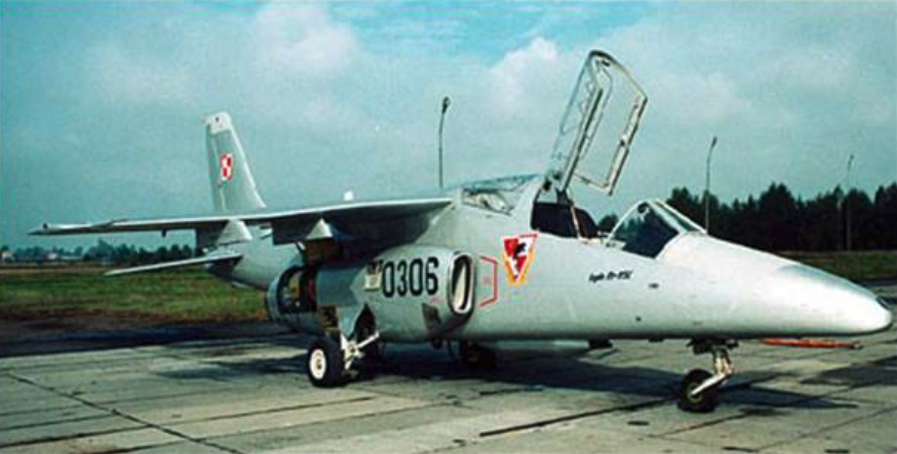
The last produced copy of Iryda - version M-93 K (R) No. 1 AN 003-06 nb 0306.
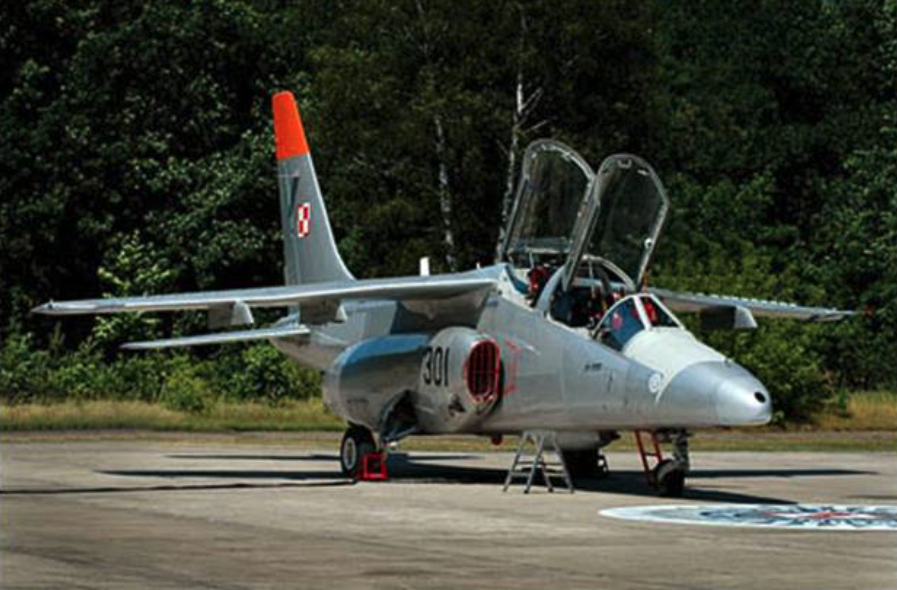
Aircraft I-22 M-93 M No. 1 AN 003-01 nb 301 was the last airworthy.
Dictionary of abbreviations and explanations;
WTT - tactical and technical requirements.
WWTT - initial tactical and technical requirements.
SWTT - detailed tactical and technical requirements.
IL - Institute of Aviation.
OBR SK Mielec - Communication Equipment Research and Development Center in Mielec.
PZL WSK-Mielec - Polskie Zakłady Lotnicze, Communication Equipment Factory in Mielec.
ZPLiS PZL - Unification of the Aviation and Engine Industry PZL.
ZWSLiS - Association of Aeronautical and Engine Equipment Manufacturers. Established in 1982. in place of ZPLiS.
MON - Ministry of National Defense.
STL MON - Head of Aviation Technology MON.
PW - Military Representations (military cells located at strategically important factories).
BUSS - Office to Run Special Equipment. Military facility at MHiPM.
MHiPM - Ministry of Metallurgy and Machine Industry.
USSR (USSR) - Union of Soviet Socialist Republics.
R&D - research and development.
R&D and W - research and development and implementation.
CNPSL - Light Aircraft Science and Production Center, created from the merger of WSK Okęcie and IL.
ITWL - Air Force Institute of Technology.
Comecon - Council for Mutual Economic Assistance, organization of Moscow camp countries to support the economies of dependent countries.
Written by Karol Placha Hetman
Kraków 2008-08-01
271b Section 1985-03-05
PZL Iryda I-22
Poland
Combat training aircraft.
Construction. Part 5.
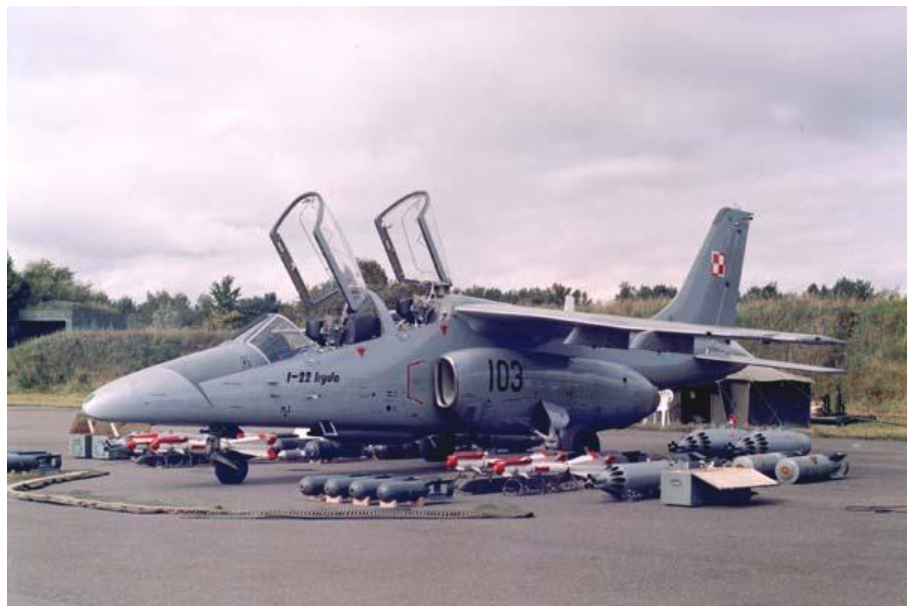
The M-96 aircraft was to be the final version of the Iryda I-22 aircraft. For various reasons, another version was created, which received the significance of the M-93 M. It was the unification of already produced aircraft to one version and putting them on the armament of the Polish Army.
Construction PZL I-22 M-96 Iryda. 1997 year.
Another attempt to solve the problem of introducing Iryda aircraft to the armament of Polish Aviation led to the creation of another version, this time marked M-96. there were two main elements of modernization. The first was modern avionics, but not Sagem. The second element was the improvement of volatile properties.
The biggest changes were made in the aerodynamics of the airframe by adding new elements whose overall purpose can be reduced to the possibility of flying at larger angles of attack.
The M-96 aircraft received inflows (bands) placed in front of the wings, next to the fuselage. They cause that the wings receive the aerodynamic features of so-called banded wings, commonly used in combat aircraft.
The M-96 aircraft received turbolizers. Turbolizers are special small components mounted on the upper surfaces of the wings, in a row. They produce appropriate air swirls, making it difficult to detach from the lobe. Turbolizers have been developed in the USA in 50 years.
The M-96 aircraft received new flaps. New flaps give more lift at lower speeds.
The M-96 aircraft received an elevated vertical tail. At a larger angle of attack the efficiency of the vertical tail decreased. The simplest solution turned out to be to raise the vertical tail.
Aircraft installations I-22 M-96.
The fuel system consists of seven internal tanks, including three integral wing tanks with a capacity of 1 140 liters and hull: front, rear and two outgoing tanks with a capacity of 1 270 liters. The total capacity is 2 419 liters. Fuel tanks with a capacity of 2 x 380 liters, adapted from the Lim-6 aircraft, can be hung on the internal suspension nodes under the wings. These tanks can be discarded empty or full on the fly. If one of the tanks falls off, the other is automatically rejected. The fuel system allows reverse flight for 30 seconds. Two electric fuel pumps and two independent fuel supply lines for each engine. In addition, with a valve that allows fuel to be fed through one pump to both engines in the event of a failure of the other pump. One pump is enough to power both engines. All fuel tanks are connected by a system of pipes and valves. Suspended tanks and then wing tanks are emptied first. The transfer of fuel from suspended and wing tanks to hull tanks is carried out using compressed air. Filling tanks with a central valve or individually for each tank. The central valve is located in the left engine nacelle and is adapted to typical airport equipment. Individual filling of each tank is used in the absence of typical airport equipment. The fuel supply is controlled by a capacitive fuel meter. The fuel gauge indicator is located in both cabins. Reports the total amount of fuel in internal tanks and the amount of fuel separately in the hull. Traffic lights give; emptying of suspended tanks, emptying of wing tanks and critical fuel residue.
The hydraulic system of the M-96 aircraft is the basic force installation in the aircraft. The medium is AMG-10 oil with a pressure of 21 Mpa. The installation consists of two independent systems; main installation and installation of amplifiers. The main circuit is used for; retracting and extending the undercarriage, setting and maintaining the wing flaps in three positions, extending and retracting the aerodynamic brakes, changing the wedge angle of the horizontal stabilizer, braking the wheels with the use of the anti-slip system (ABS) and emergency and parking braking of the main landing gear, front wheel control, parachute drop braking. However, the amplifier circuit is used to drive aileron amplifiers, in the event of its failure manual aileron control. This system reduces pilot effort. Each circuit has a hydro-accumulator to prevent pulsation of the working fluid and provides coverage of the rapid increase in the demand for executive circuits. The third hydro-accumulator maintains the pressure in a separate emergency and parking braking circuit of the main landing gear wheels. The pressure in all three hydro accumulators and the position of the wedged horizontal stabilizer is visible in each cabin. Signal lights indicate the position of the chassis, flaps, air brakes and excessive pressure drop in both installations. The option of powering from an airport hydraulic system is used when testing systems with engines off.
The pneumatic installation of the M-96 aircraft consists of three separate circuits fed with nitrogen from a 15 Mpa pressure bottle. The first circuit is used for emergency landing gear extension, the second is for wing flaps in landing position, the third circuit allows the crew cabs to be opened and sealed, the windbreak liquid anti-icing system to be fed and pressure generated in the hydraulic fluid tanks to ensure reliable operation of the installation at higher altitudes. The current pressure in the landing gear extension and flaps circuits is indicated in both cabins. The pressure in the cylinder feeding the third circuit is visible on the pressure gauge next to the central loading end of all cylinders.
The electrical installation of the M-96 aircraft is electrical equipment that is powered; 1 28 V DC, where the negative wire is the airframe structure. 2 single-phase AC 115 V 400 Hz. 3 three-phase AC 36 V 400 Hz. The main source of DC power are two 9 kW PR-9 starters each. Under normal conditions, generators are loaded with a maximum of 50% of the rated power. In the event of a failure of one of them, the other takes over completely. In the event of a failure of both generators, the necessary current to complete the flight safely comes from two 20 cadmium-nickel NKBN-25 batteries. 115 V 400 Hz alternating current is produced by two transistor converters with a capacity of 1 kVA each. After the failure of the first converter, the second one switches on automatically. 36 V 400 Hz three-phase AC are produced by two 500 VA power converters each. As above, one always works and the other switches on automatically in the event of the first failure. These emergency switches are signaled in both cabins.
The electrical installation of the M-96 aircraft powers pilot and navigation equipment, internal and external lighting, and on-board diagnostic and control system. Possibility of power supply from airport electrical system. Position lights are placed on the wing tips and the vertical tail. They can be tinted. They are lit and extinguished with a button on the motor control lever. Flashing anti-collision lights are located on the upper and lower hull surface. Two landing lights are retracted from the bottom of the wings. After the landing gear has been extended and locked, white lights come on on the shins, which are signals for airport flight control. Technical maintenance on the ground uses portable lamps connected to seven sockets located in different places of the airframe. The engine nacelles and the two front avionics compartments are equipped with fixed lamps that light up when the cover is folded back.
The M-96 aircraft diagnostic system is a separate part of the electrical installation. It is an extensive diagnostic and recording system. It consists of many sensors on various installations and engines. These sensors convert the parameters of these installations into analog or binary electrical signals, and these are recorded in the on-board recorder located at the base of the vertical stabilizer. After connecting with the ground part of the system, you can infer from these records about the technical condition of the devices and take preventive measures.
The M-96 anti-icing system includes engine air intakes and a windscreen. Hot air from engine compressors is used for deicing. The windbreak has a spirit spray installation and an electric windscreen heating system.
The M-96 aircraft fire protection system is intended for signaling and extinguishing a fire in engine nacelles. The fire is signaled light in both cabins and in the headphones of both pilots. Extinguishing is started after switching off the fuel valve for a burning engine by pressing a button in the first or second cabin. The extinguishing medium is freon. The fire extinguishing system can be started twice during one flight.
Avionic equipment of the M-96 version.
The equipment of the M-96 aircraft is: Sextant-Avionique inertia platform, navigation equipment (GPS, IFF, ILS), RWL-750M radio altimeter, HUD display and its repeater, two multi-function monitors (EFIS).
Unfortunately, for two years the entire avionics of the M-96 aircraft could not be merged. The intended results were not achieved.
Armament I-22.
Fixed: 23mm GSz-23 Ł twin-barrel aviation gun, 50.5 kg, placed under the hull at the height of the crew cabins, with a supply of 200 rounds. When 50 cartridges are loaded, it is possible to recover the fired cases and tape links.
Suspension hooks: 4 UBP-I-22 beams with a load capacity of 4 x 500 kg, however, the maximum load capacity of the armament for an aircraft with K-5 engines was 1,100 - 1,200 kg, with K-15 engines - 1,800 kg. It was possible to use several combinations of training and combat weaponry: 50 kg (P-50) or 100 kg bombs (FAB-100, OFAB-100M) on MBD2-67U multi-beam beams, 250 kg bombs individually hung (FAB-250TSz, FAB -250-M-46, ZAB-250-200) or 500 kg (FAB-500-400, FAB-500-M-62), 57 mm launchers of non-directed S-5 missiles for 8, 16, 32 missiles (Mars -2, Mars-4, UB-16-57U, UB-32A-1), 80 mm launchers of non-guided missiles for 20 missiles (B-8 M), guided air-to-air missiles (R-3S, R-60MK) , UPK-23-250 shooting tanks with 23 mm cannons, ZEUS-1 tanks with 7.62 mm km, Saturn reconnaissance tanks.
In the case of a wider introduction of the I-22 aircraft to Polish Aviation combat units, it was probably possible to integrate the aircraft with other aviation armament designs used at that time in Poland: cassette, mine, reconnaissance bomb containers, etc.
Data T-T aircraft PZL I-22 Iryda.
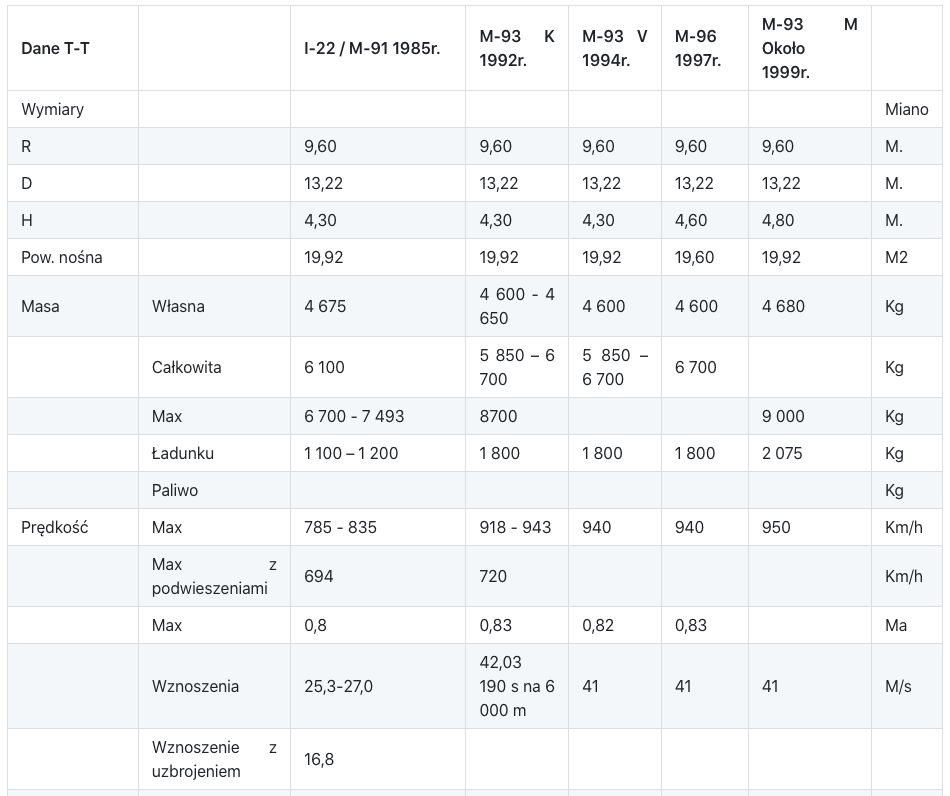
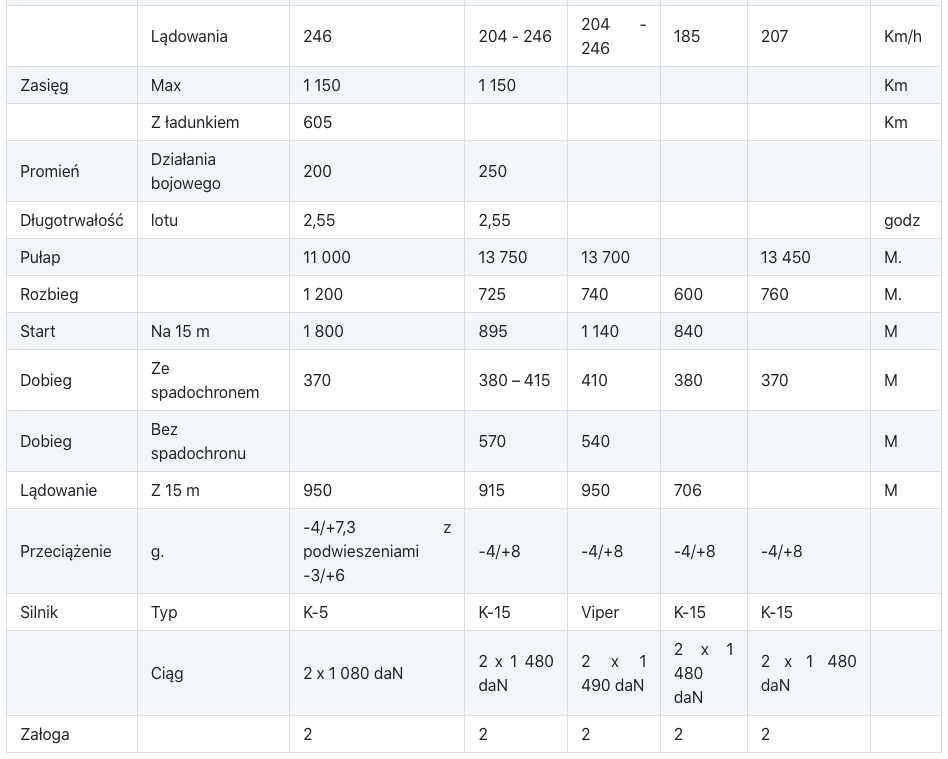
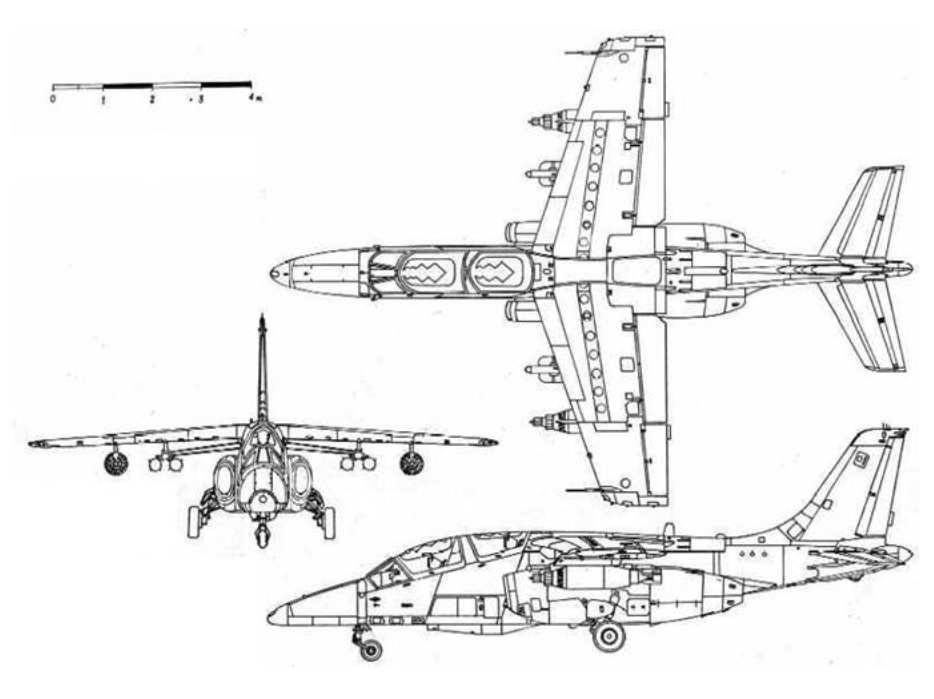
Written by Karol Placha Hetman
Kraków 2008-08-01
271b Section 1985-03-05
PZL Iryda I-22
Poland
Combat training aircraft.
Tally
The tally is in another Section.
Written by Karol Placha Hetman
